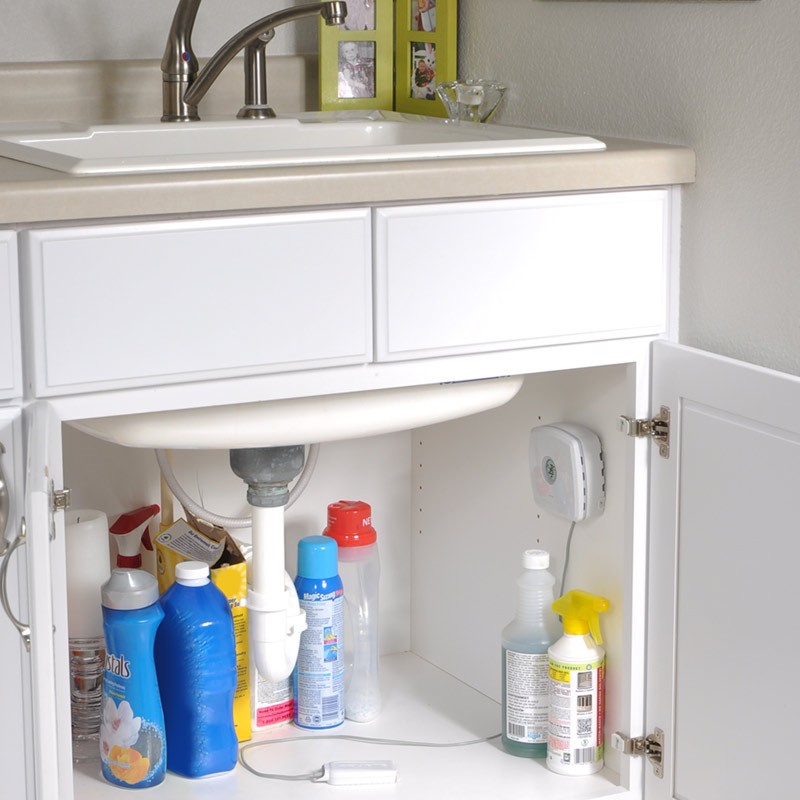Preventing the Growth of Mildew and Mold in Homes
Particularly during hot and humid times of year, like summertime, mold is your home’s biggest enemy. Between mold symptoms and destruction of property, this tiny intruder punches well above its weight in terms of damage. Fortunately, if you take some simple steps, such as properly monitoring and maintaining indoor humidity levels and temperature, you can keep mold and mildew at bay.
Following is an overview of actions you can take to maintain comfortable and healthy indoor conditions, as well as our recommended solution for easy home environment monitoring to prevent the growth of mold and mildew.
How to Minimize Mildew and Mold in Homes
Monitor and maintain ideal humidity levels: The EPA recommends indoor humidity stays between 30% and 60%.
- Use dehumidifiers and air conditioners to combat high-humidity: When household humidity is above 60%, dehumidifiers and/or air conditioning are effective tools for reducing conditions friendly to mold. These are particularly useful in summer and/or in southern and southeast regions of the US.
- Ventilate areas where high-humidity occurs: Daily activities like laundry, showers, and cooking can all lead to mold. Keep air moving by opening bathroom doors, opening windows if possible, running exhaust fans, etc.
- Take steps to minimize potential for seepage, leaks and flooding: These can include simple solutions like keeping gutters clean and maintained, and more extensive actions like ensuring the grade of your yard sufficiently directs water away from your home’s foundation.
- Inspect your home to identify potential problem areas: These can include your basement, a leaky roof, an old water heater, and windows that frequently see condensation. If you find problem areas, take corrective action.
- Wipe up wet areas quickly: Spills, leaks, flooding, basement seepage and other similar situations can lead to mold if you don’t deal with them immediately. Mold typically requires 24-48 hours in a moist environment to grow. So the moment you find moisture, start cleaning it up.
- Keep your house clean: Using a vacuum with a HEPA filter, mopping floors, and dusting can help minimize the number of mold spores in your home.
- Don’t leave wet clothes laying around: Put your clothes in the dryer as soon as possible after washing them. Same holds true if you’re caught in a rain storm.
Problems Caused by Mildew and Mold in Homes
Mold Symptoms: According to the Environmental Protection Agency, Molds produce allergens (substances that can cause allergic reactions), irritants, and in some cases, potentially toxic substances (mycotoxins). Inhaling or touching mold or mold spores may cause allergic reactions in sensitive individuals. Allergic responses include hay fever-type symptoms, such as sneezing, runny nose, red eyes, and skin rash (dermatitis). Allergic reactions to mold are common. They can be immediate or delayed. Molds can also cause asthma attacks in people with asthma who are allergic to mold. In addition, mold exposure can irritate the eyes, skin, nose, throat, and lungs of both mold-allergic and non-allergic people.”Needless to say, mold is not something you want to be breathing in for extended periods and on a daily basis.
Property damage: Since mold decomposes matter, it can rot wood and drywall, ruin carpets and ceiling tiles. It can destroy pretty much anything that offers enough moisture for mold to grow on. Once mold takes hold, you can expect hefty repair bills. Fortunately, mold is easy to prevent when proper steps are taken.
Odor: If you’ve ever been in a home that smells musty, that’s mold. Not only is this unpleasant for you and your guests, it can negatively impact your home’s resale value. Some realtors won’t even show a home if they smell mold when they first walk in.
Unattractive appearance: Mold seen on ceilings, walls, and window sills just plain looks bad.
Suggested Steps for Mold Prevention


- Place AcuRite Room Monitors around the home (ex. bedrroms, living areas, attics, basements, etc.) to measure humidity and temperature conditions.
- Position one or more Water Leak Detectors in areas of potential leaks and flooding
- Beneath appliances: Set up a leak detector beneath dishwashers, washing machines, water heaters, and other appliances that are susceptible to leaks
- Beneath sinks and showers: Gain early warning of leaky pipes, or when to replace caulking
- Inside sump pump wells: Hanging a leak detector in a sump pump well can give you early warning of impending flood conditions
- On basement or attic floors: Get instant notification if your home is taking in water during a storm
- High Humidity Alert: Take corrective action if relative humidity levels exceed the EPA-recommend maximum of 60% RH.
- Low Humidity Alert: Take corrective action if relative humidity levels dip below the EPA-recommend minimum of 30% RH.
- Water Present Alert: Take corrective action to fix leak and remove water before mold has chance to grow.
Further Reading
The following list includes great resources for more information on this topic:
- The Environmental Protection Agency published a helpful guide to mold and moisture in your home
- The Centers for Disease Control and Prevention offers these basic mold facts
- The Mother Nature Network offers these nine tips to prevent mold
- Blackmold.awardspace.com has additional suggestions for mold prevention in your home






